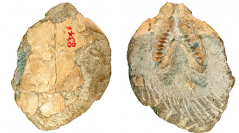

 Comptes Rendus Palevol
18 (1) - Pages 33-50
Comptes Rendus Palevol
18 (1) - Pages 33-50During the last decade, the taxonomic, phylogenetic, and evolutionary knowledge of the groups within Caviidae (i.e. Hydrochoerinae, Caviinae, and the stem eocardiids) has been improved and expanded. However, the evolutionary patterns of Dolichotinae are poorly known due to the lack of detailed taxonomic studies of their fossil forms. The subfamily Dolichotinae are known as patagonian mara (Dolichotis patagonum) and chacoan mara or “conejo de los palos” (Dolichotis [ Pediolagus ] salinicola) and, within Caviidae, are the second largest rodents after the capybaras. The subfamily presents its highest diversity in the late Miocene. Prodolichotis is represented by six species, but most of them have not been studied since their original description. An exhaustive description of the type species of Prodolichotis from the late Miocene-Pliocene of Northwest Argentina is here reported with the objective of filling the gaps and increasing the knowledge about the origin and diversification of the Dolichotinae. The phylogenetic analysis implemented here indicates that Prodolichotis prisca is one of the most basal species within Dolichotinae, suggesting that this group originated at least during the Miocene.
Rodentia, Caviidae, Prodolichotis , Catamarca, South America